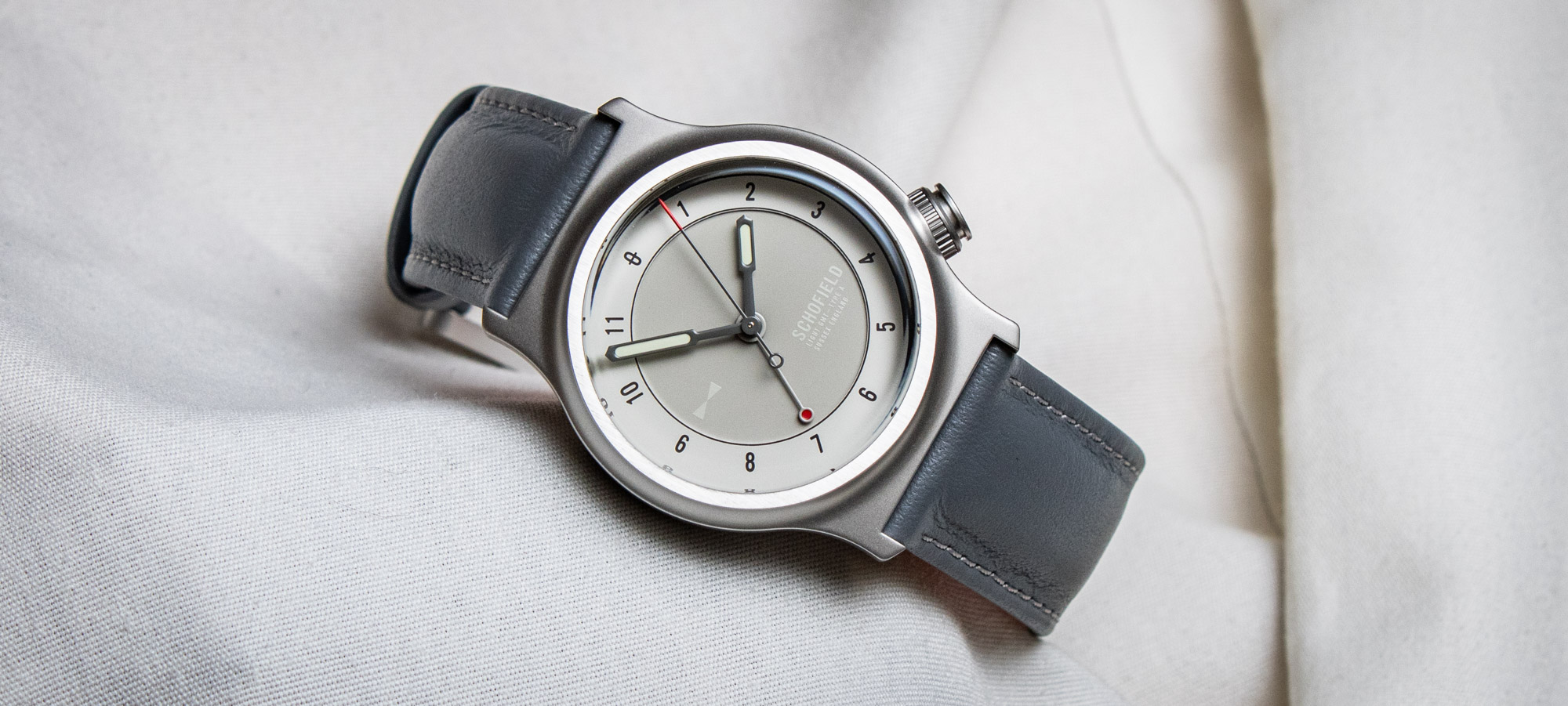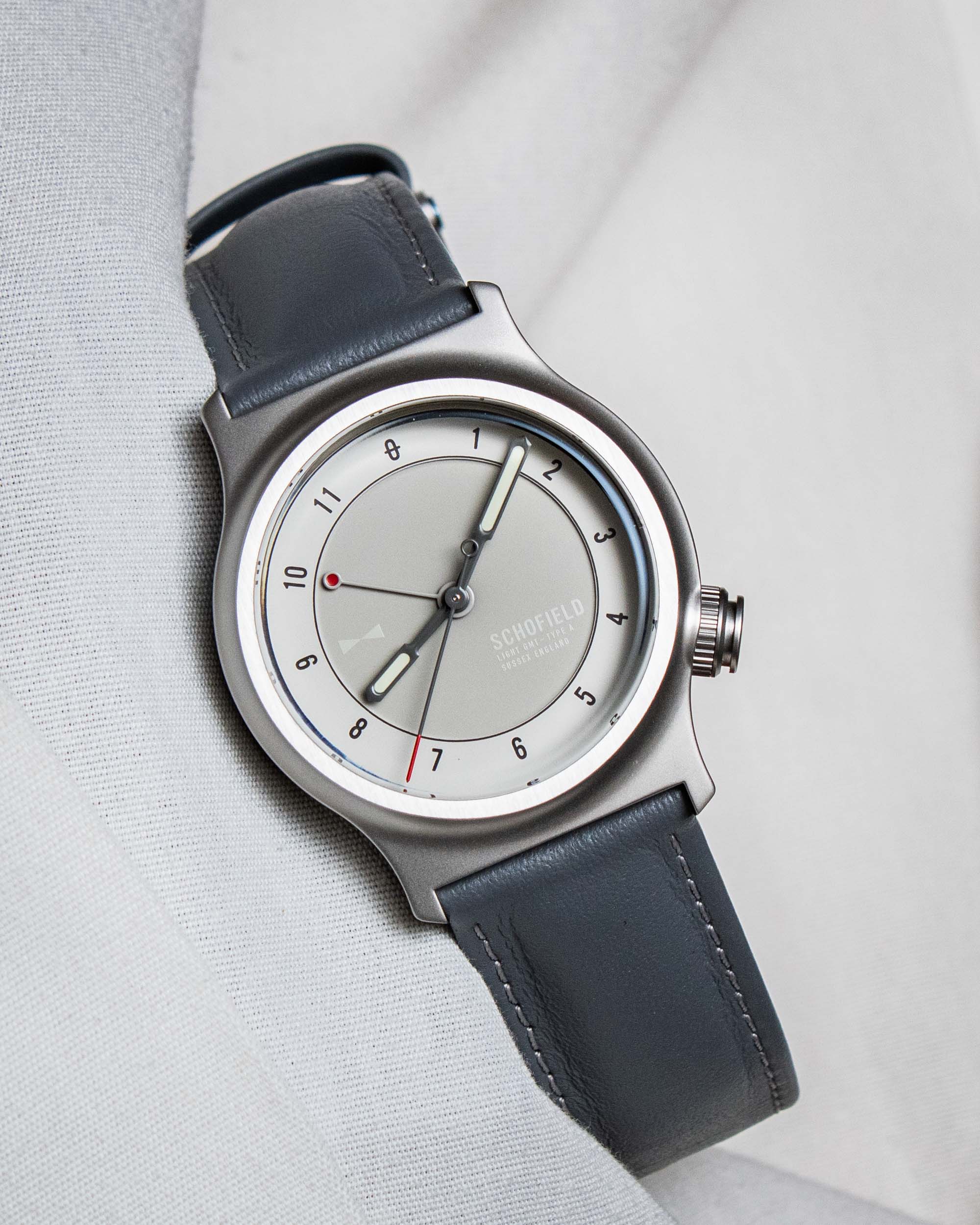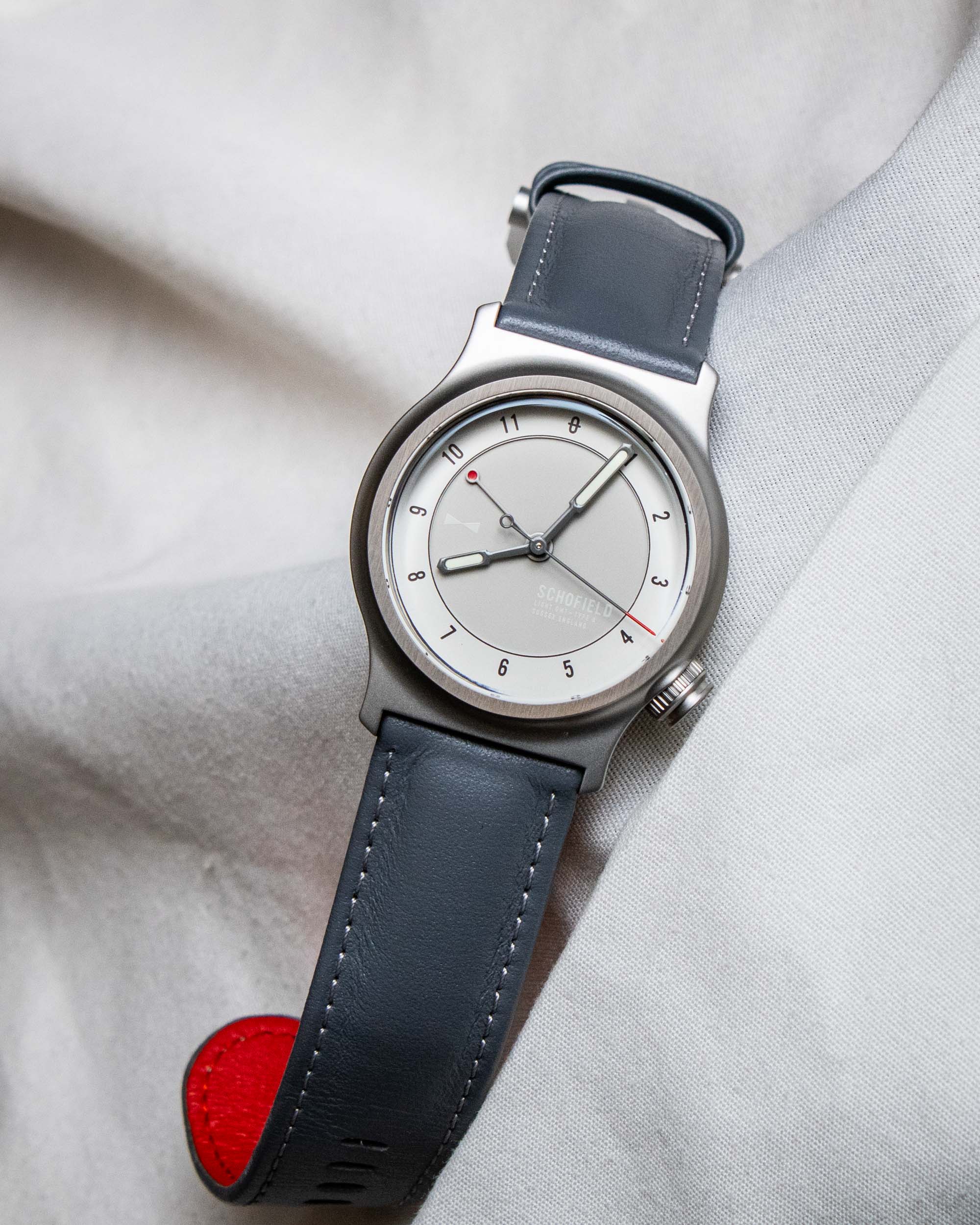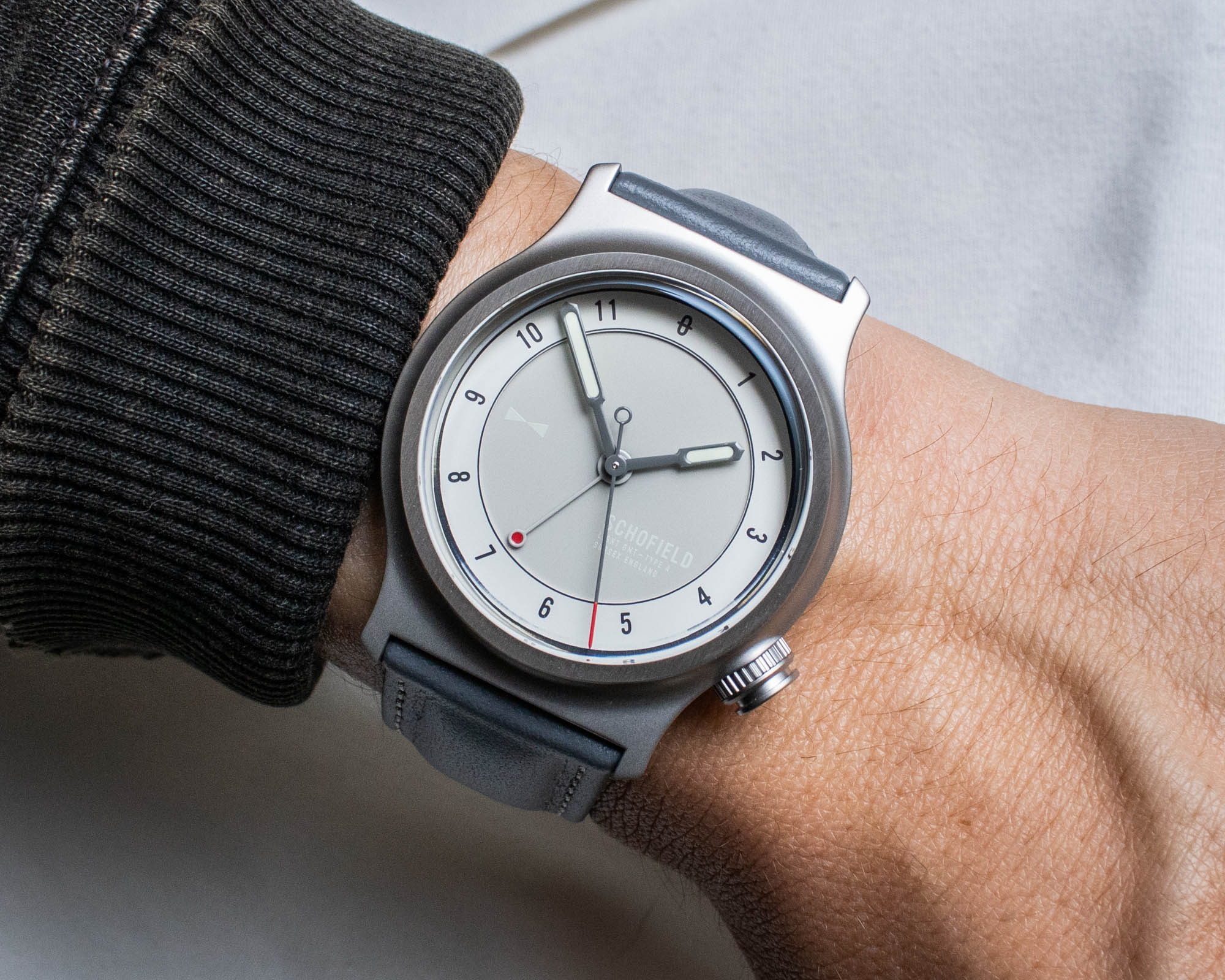
After 15 years of producing timepieces with the same case shape and dimensions, British watch brand Schofield has created an all-new design for its latest release of 2024. Formally categorized as a “general purpose field watch” within the brand’s official materials, the Schofield Light was designed to be an everyday timepiece with a smaller case profile that could exist at a more affordable price point than the brand’s flagship offerings. With that in mind, despite being a field watch, the Schofield Light is actually powered by an automatic GMT movement. While this model was designed to be the brand’s most attainable offering, calling it “entry-level” isn’t exactly an accurate statement.
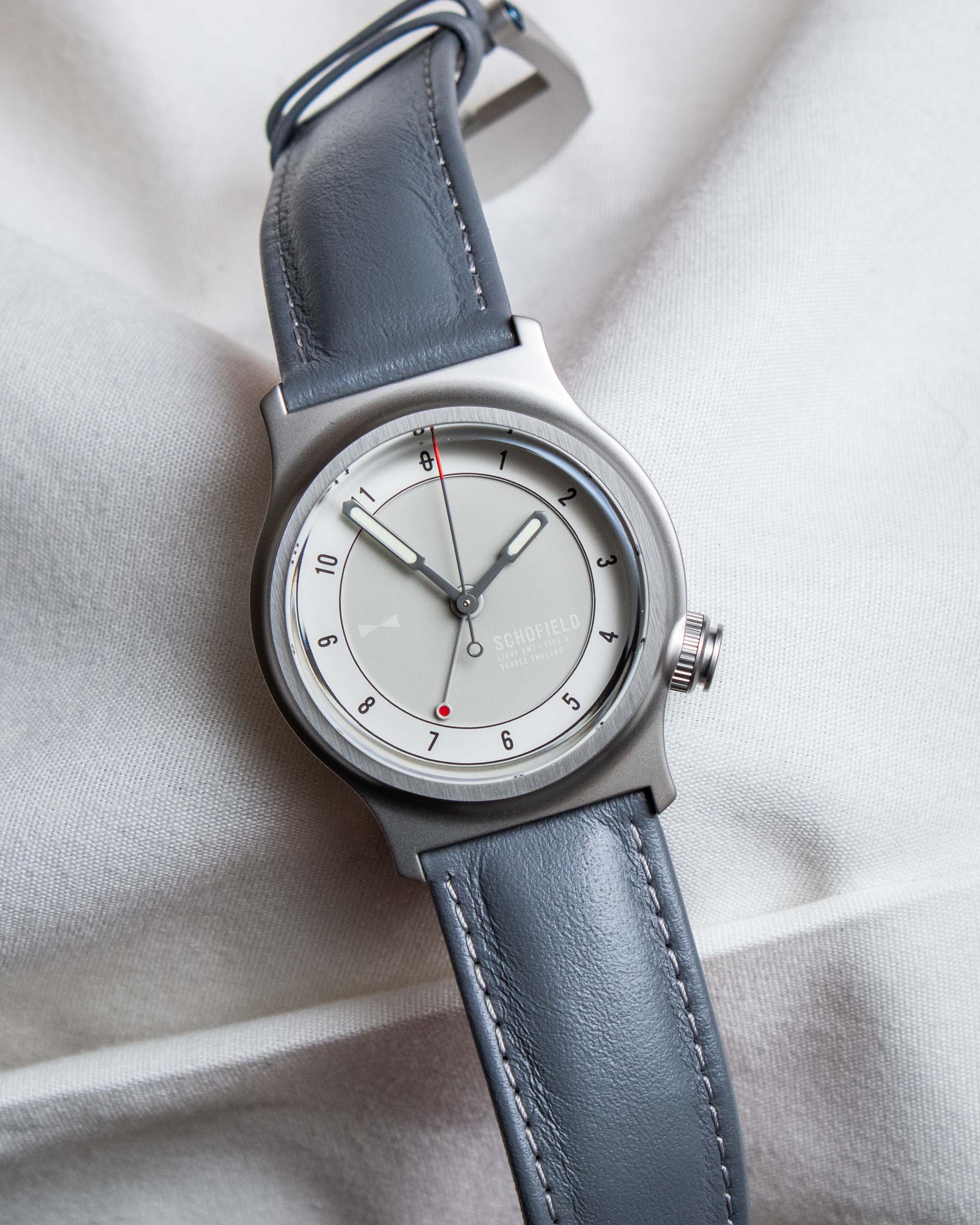
The Schofield Light exists in two variations, which are named “The Light One” and “The Dark One,” and each version of the watch is produced as a limited edition of just 150 pieces. Aside from their colorways and the finishing on their cases, the two models are otherwise identical, and while “The Light One” is the version featured here, “The Dark One” embraces a more stealthy colorway for its dial, and it also features a black PVD finish on its case components. While the Schofield Light itself is loosely inspired by military-issued field watches, lighthouses also play a prominent role in Schofield’s world of inspiration, and while the name of the Schofield Light is certainly partially referencing these beacon-emitting coastal structures, it also serves as a subtle play on the word “lite” because this model was specifically created to be both smaller and less expensive than the brand’s standard-collection watches.
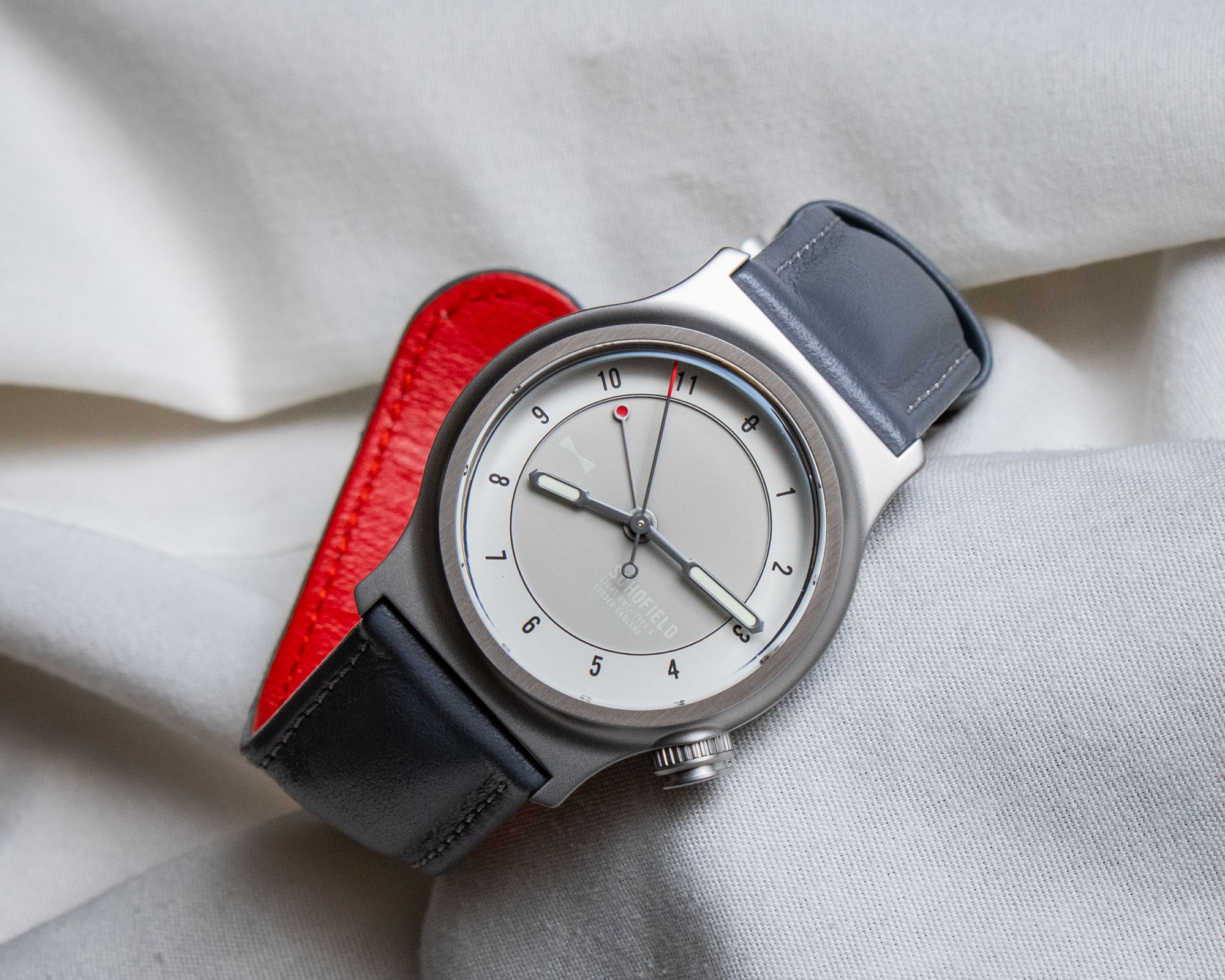
Crafted from stainless steel, the case of the Schofield Light features a largely sandblasted finish with an anti-fingerprint coating, although the top rim of its bezel is vertically brushed to add a bit of visual intrigue and a subtle dash of refinement. In terms of dimensions, the Light measures 40mm in diameter and including the box-shaped sapphire crystal that slightly sticks up above the rim of its bezel, the total height of the watch comes in at 13.5mm thick. The compact lugs are set 22mm apart and extend to create an overall lug-to-lug profile of 48mm, and rather than being a separate component, the bezel is simply formed by the top edges of the case, which curve upward to create a rim around the outer perimeter of the crystal. Slightly recessed into the side of the case at the 4 o’clock location is a signed crown that screws down with a double gasket system to create a rather generous 200 meters of water resistance, and since the diameter of the crown is larger than the flat surface on the side of the case, the case slightly curves outward on the upper and lower edges to fully accommodate the base of the winding crown.
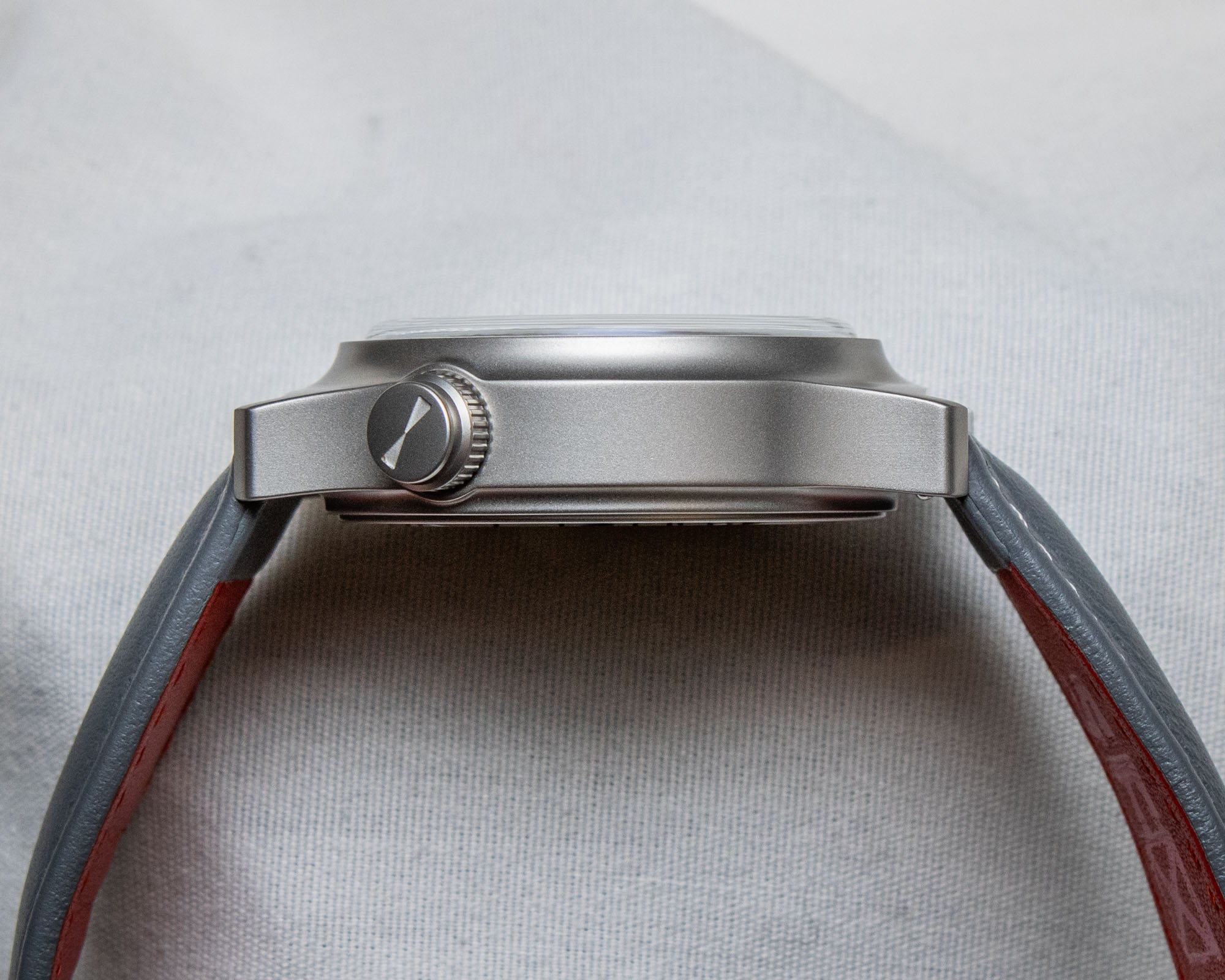
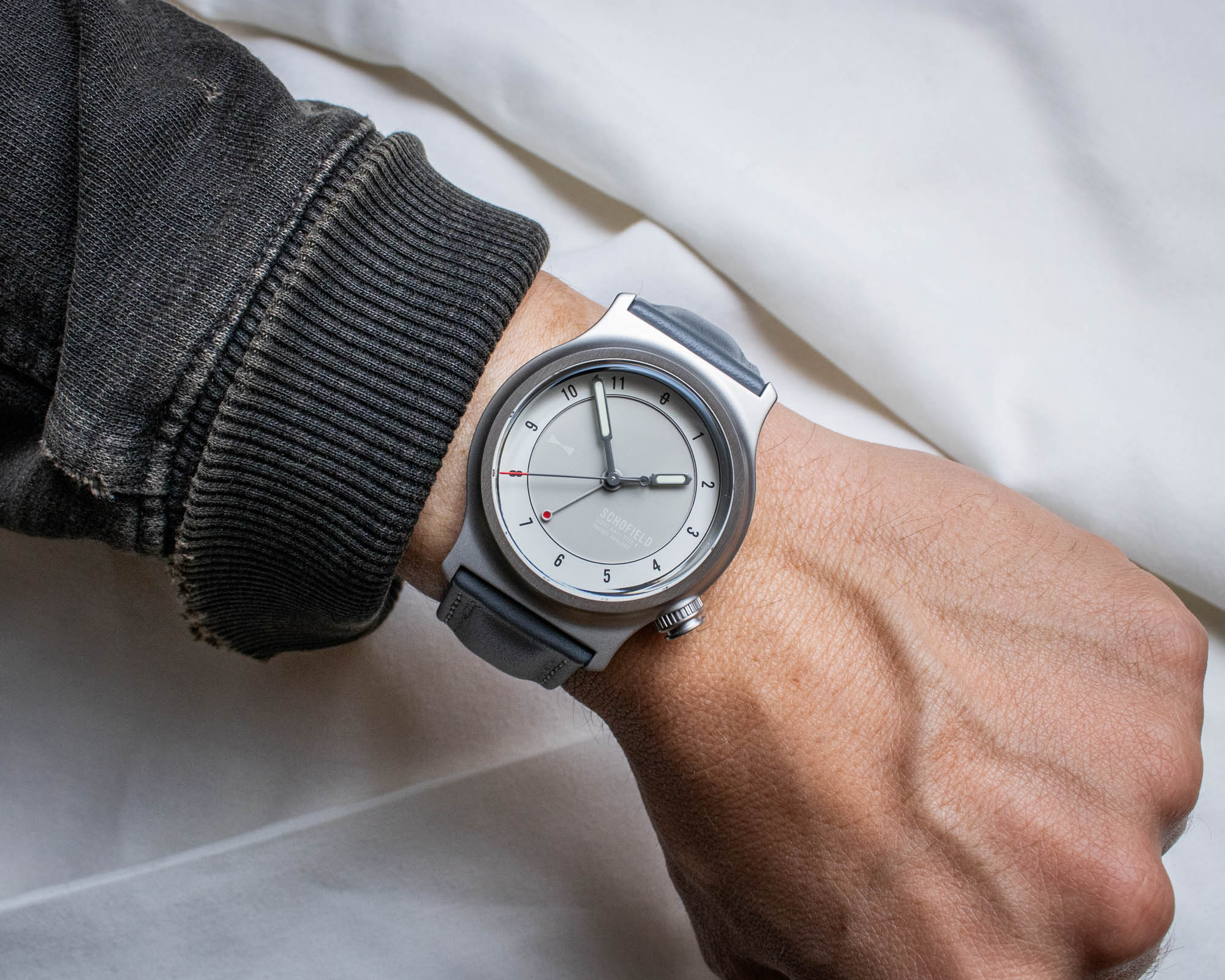
The reverse side of the Schofield Light is fitted with a screw-down caseback; however, rather than having a series of small recessed shapes around its perimeter to fit the prongs of a caseback tool, the caseback on the Light is completely flat, and a rubber ball-style caseback tool is used to grip its surface whenever screwing it or unscrewing it from the case. The center of the caseback is set with a flat mineral glass crystal, although rather than being a display-style caseback, a stylized graphic of a lighthouse is printed across the entirety of the crystal’s underside surface. That said, very small sections of the caseback, such as the window on the lighthouse and the stars in the sky have been left transparent, and this allows the metallic components of the internal movement to catch the light and shine through to create an interesting and slightly three-dimensional effect.
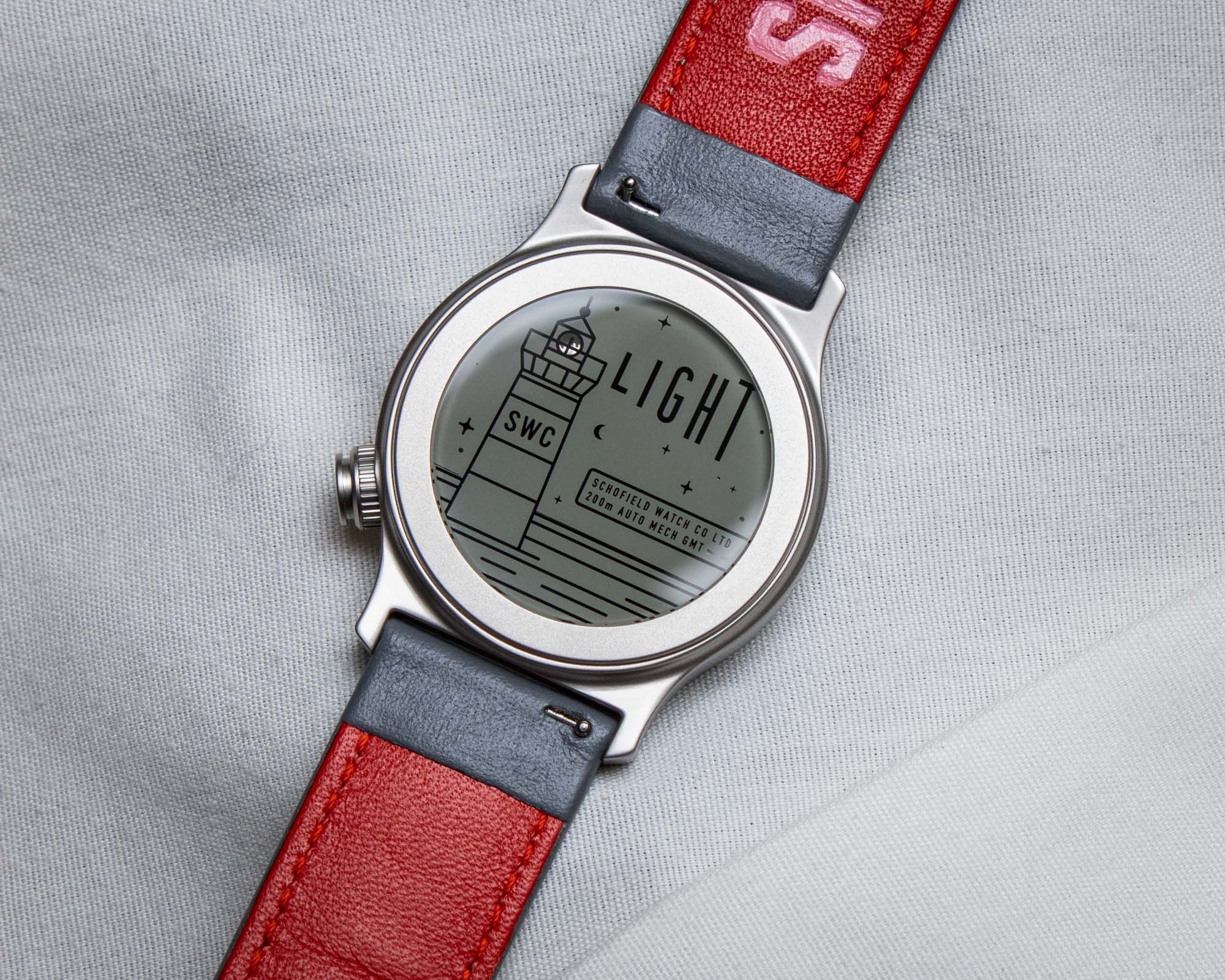
Personally, I would have preferred to see sapphire used for the caseback of the Schofield Light, although the real-world benefits of having a harder material for this component would have been virtually non-existent since it spends the majority of its life hidden away from danger against the wrist. Additionally, while the completely flat profile of the caseback is quite aesthetically appealing and guarantees that there won’t be any dirt/grime accumulating within its crevices, having to rely solely on friction to grip it might eventually prove slightly problematic from a service standpoint if the threads ever become stuck after years of wear and use. Similarly, while I find its case shape to be quite charming, it does wear rather large for its on-paper dimensions due to the blocky profile of its lugs. The lugs themselves are quite short and modestly sized, although they offer very little downward curvature, which means that the case sits flat across the top of the wrist, rather than wrapping around it in any type of capacity.
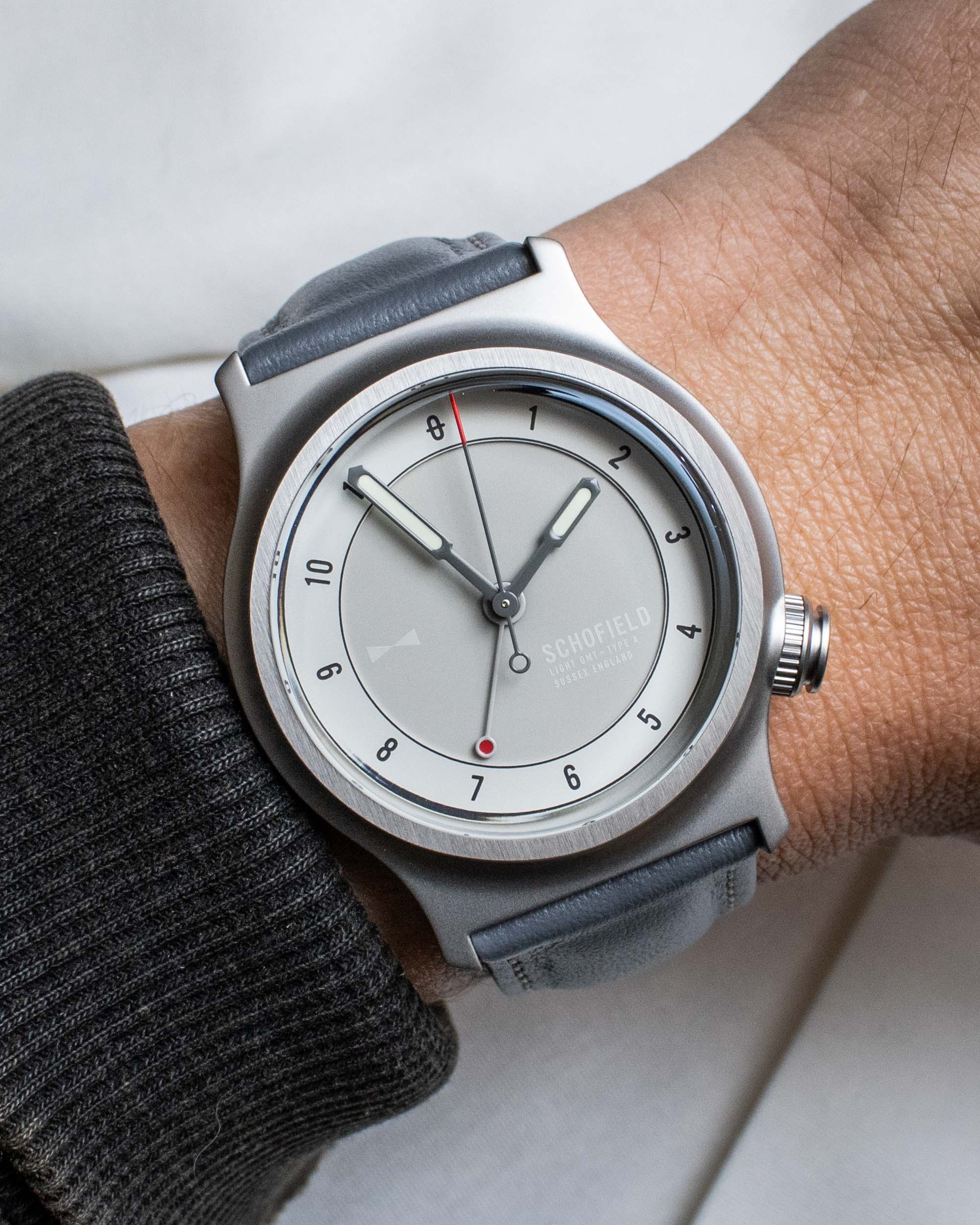
The dial of the Schofield Light features a two-layer construction, with a slightly recessed center section surrounded by a raised outer ring that contains the hour markers. Even though the Light is powered by a GMT movement and has four centrally-mounted hands, its dial doesn’t feature any type of additional markings for a secondary timezone, nor does it include a minute track, which means that both setting and reading the time requires a bit of approximation. Many watches omit a minute track for aesthetic reasons, although the more unusual detail on the Schofield Light is that it also doesn’t feature any type of markings for its secondary timezone. Without a 24-hour scale, you simply double the current value displayed by the 24-hour hand to read it — for example, if it is between 4 and 5 (therefore 4.5), it would be displaying 9 o’clock. While this is hardly the most intuitive way to display a second timezone, the Schofield Light isn’t intended to be a GMT watch, and its 24-hour hand is really more of an additional feature, rather than a primary aspect of its functionality.
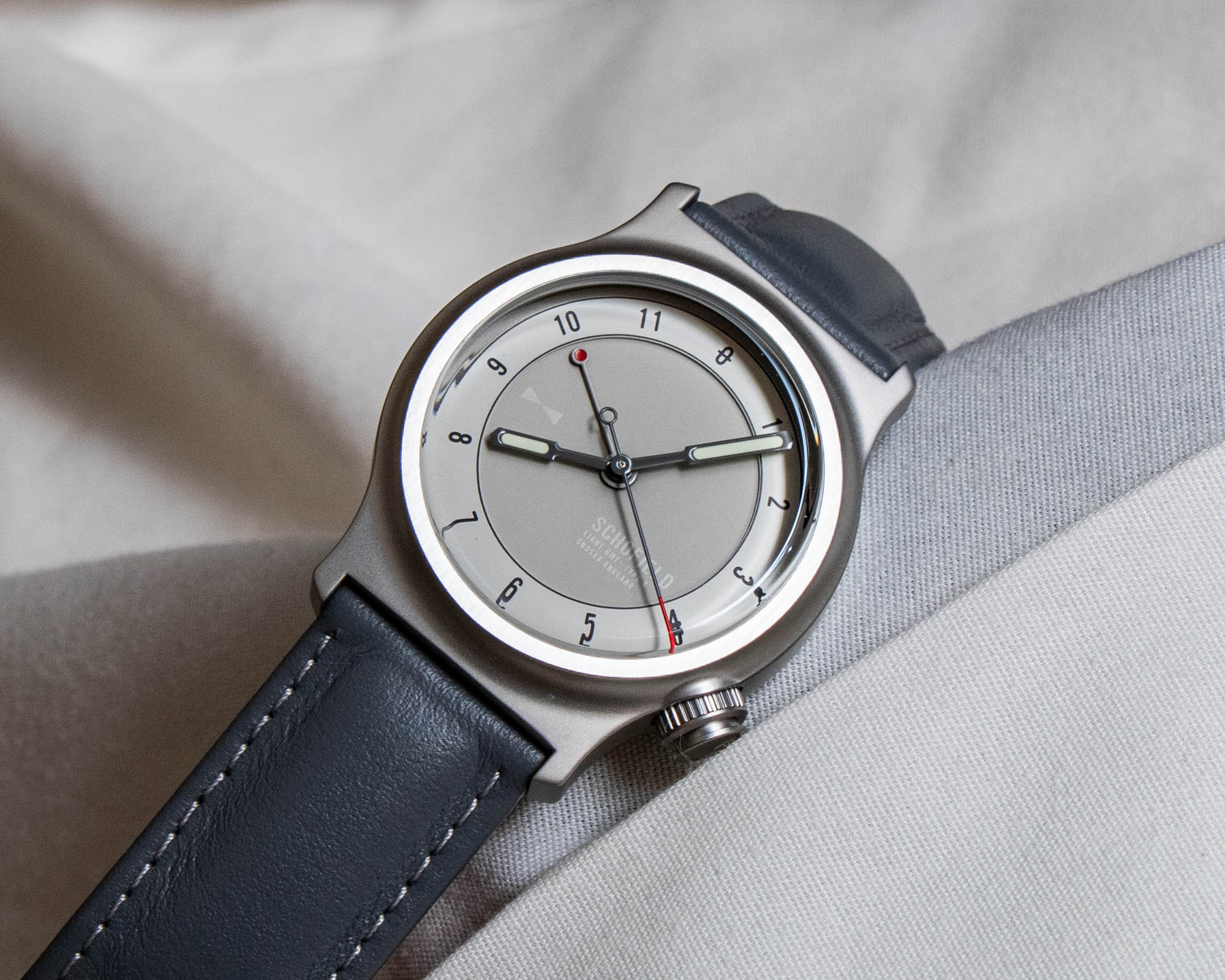
On “The Light One” version of the Schofield Light, the center section of its dial is a pale gray color, while the outer ring is white with black Arabic numeral hour markers, and rather than having a “12” printed at the top of its dial, this location is occupied by a “0” with a horizontal line running through it. The hands on the “The Light One” are finished with two different hues of gray lacquer, and a lighter tone of gray is used for the 24-hour hand compared to what can be found on its three counterparts. The dial itself is completely devoid of any luminescent material, which is slightly disappointing for a field watch, although you do get a bit of Super-LumiNova C3 on the hour and minute hands, while the tips of both the 24-hour hand and the seconds hand are finished bright red for a tasteful and restrained splash of vibrant color.
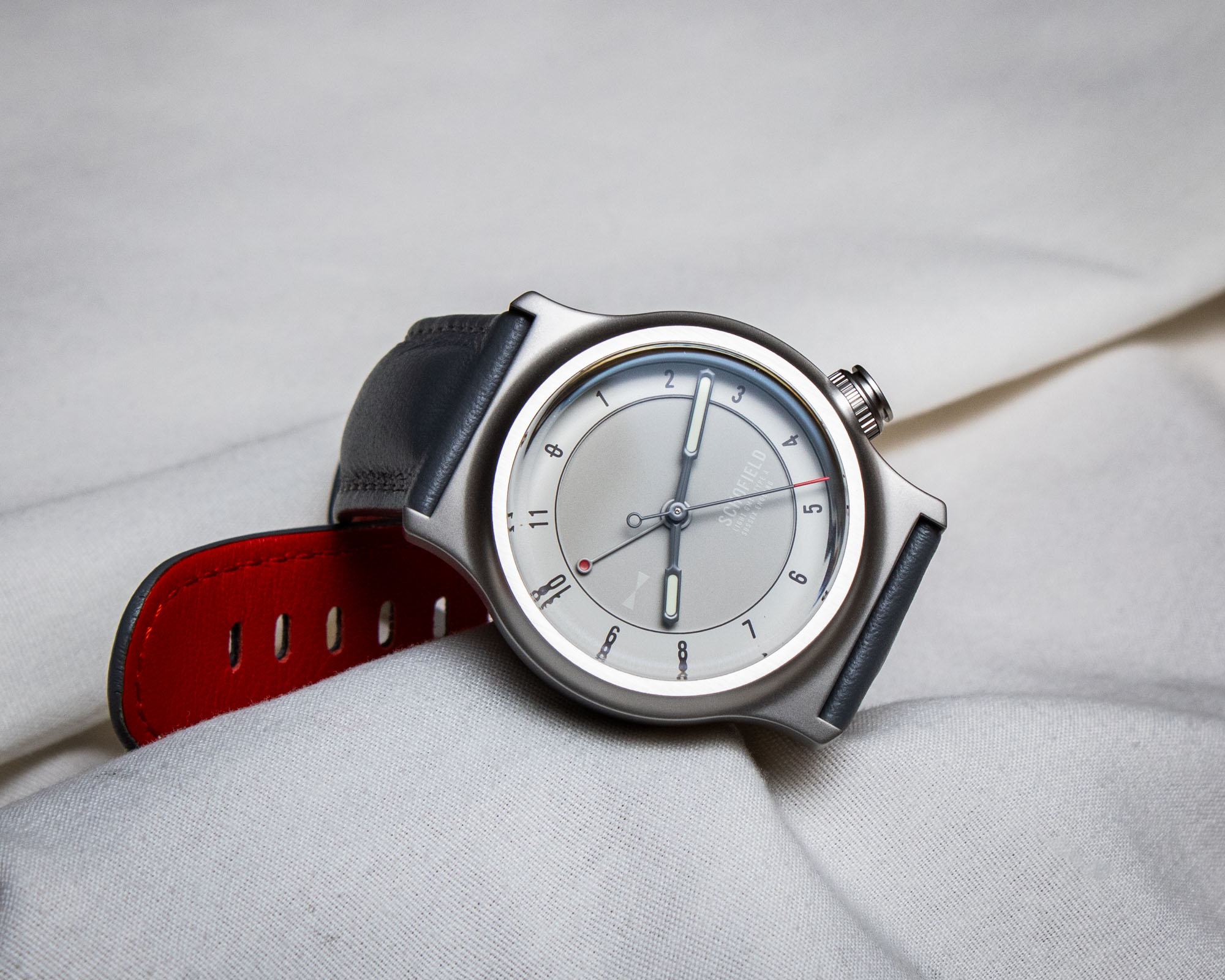
Sitting under the caseback of the Schofield Light is the Seiko NH34A automatic GMT movement, which runs at a frequency of 21,600vph (3 Hz) with a power reserve of approximately 44 hours. Additionally, since this caliber is a “caller style” GMT movement, you get an independent adjustment of the 24-hour hand, rather than the ability to jump the 12-hour hand forward or backward in one-hour increments. However, because the Seiko NH34A normally features a date display and the Schofield Light does not have a date window, you can hear the vestigial calendar mechanism click below the dial when the crown is rotated in the opposite direction from the one that is used to advance the 24-hour hand. Realistically speaking, the Seiko NH34 is a highly practical movement that is ideally suited for powering an everyday timepiece, although I can’t help but feel that it is just a bit too common and inauspicious for a premium small-scale boutique brand like Schofield.
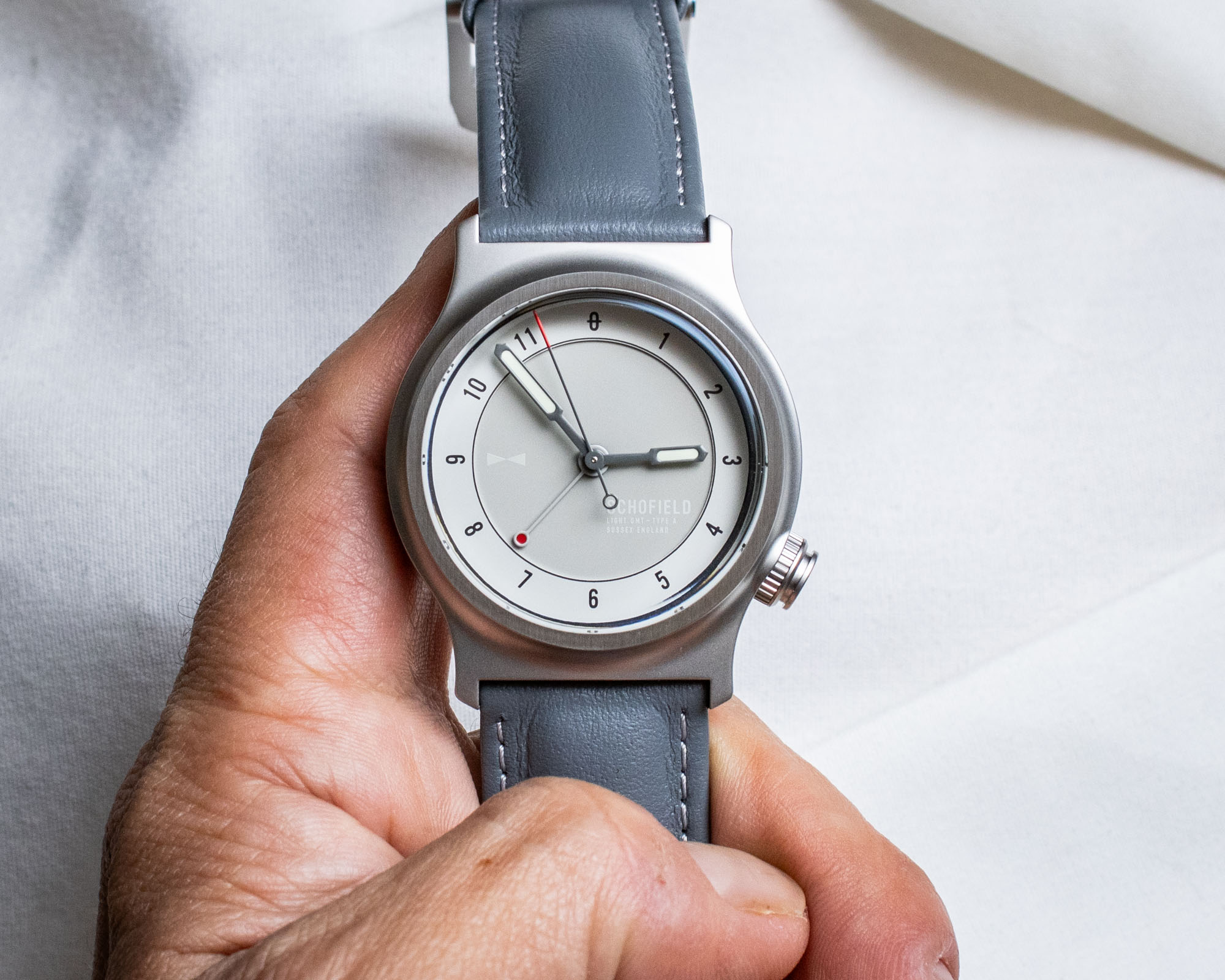
While the movement is just part of what goes into a watch, it is often the number-one factor that falls under scrutiny when buyers are assessing the value-for-money aspect of a timepiece, and commonly used calibers can often be a mental obstacle for collectors when it comes to watches on the more premium side of the spectrum. The ubiquitous ETA 2824 (and all of the Swiss variations produced by other manufacturers) can be found inside some watches that cost more than ten times the price of others, and while a similar statement applies to timepieces that use Seiko movements, the entry price for Seiko-powered watches is much lower. I’m personally a big fan of the Seiko NH34 movement itself, although a big part of the reason why I appreciate this caliber is because it allows brands to create reliable GMT watches at truly rock-bottom prices. Given that the Schofield Light was never intended to be a GMT watch, using this caliber wasn’t essential to its core concept, and I almost feel that its design would have been equally successful as a simple three-handed watch with a slightly more elevated movement.
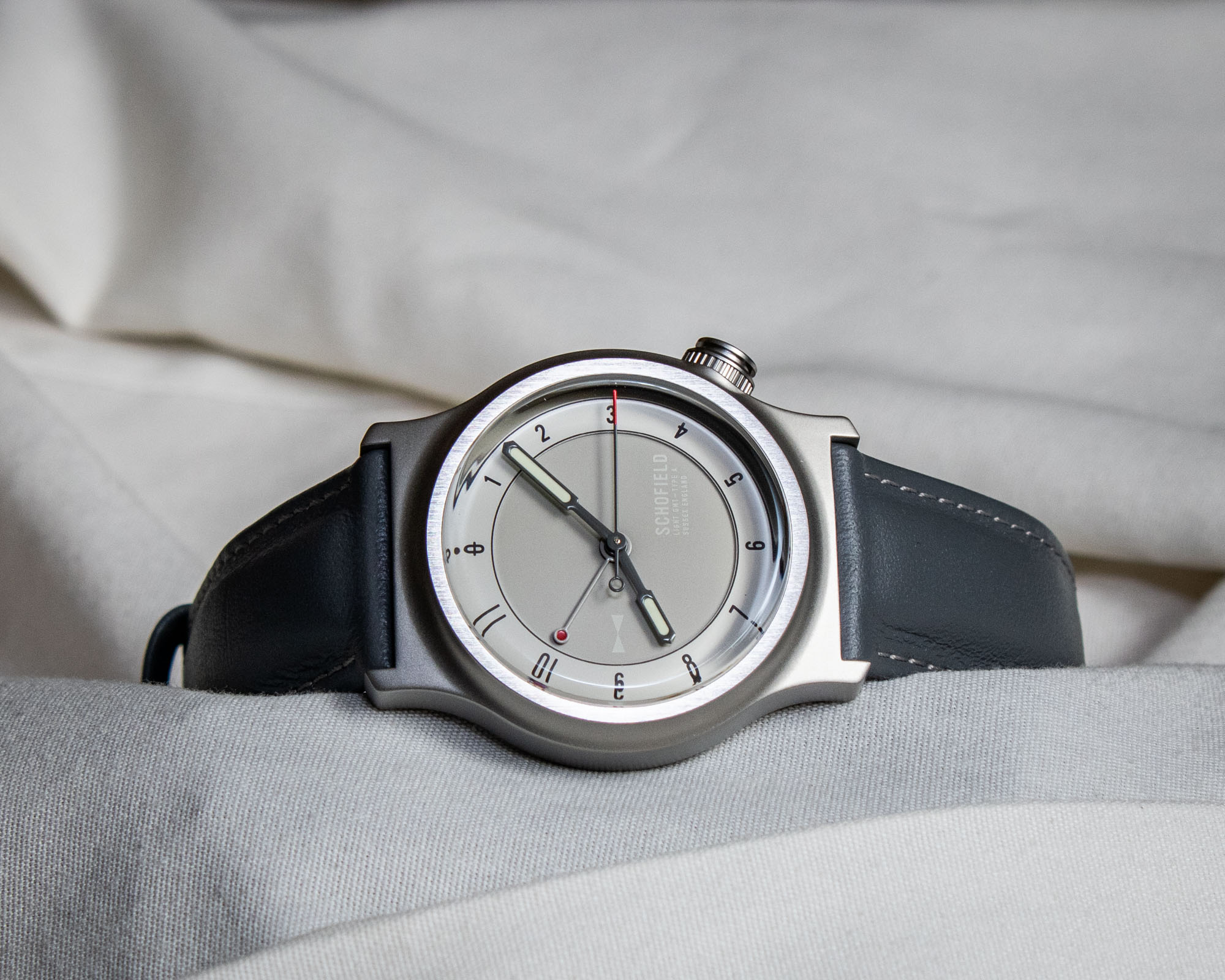
Included with the Schofield Light are a pair of straps made by Schofield’s sister company Sugar Free, and both “The Light One” and “The Dark One” versions of the model come with the same two strap options. The first is an all-black strap that is lined with Indian rubber, while the other is a gray leather strap with a bright red calf-leather lining, and both options include integrated quick-release spring bars to facilitate strap changes. Neither of the 22mm straps offers any type of taper, which means that they can use Schofield’s standard 22mm buckles, and the Light receives the chunky tang-style Obscura buckle, which has been carried over from the brand’s most expensive model. Although the quick-release springbars allow the straps to be easily removed from the case, only one buckle is included with the Schofield Light, and swapping the buckle requires the use of a small included screwdriver, which rules out the possibility of any on-the-go strap changes.
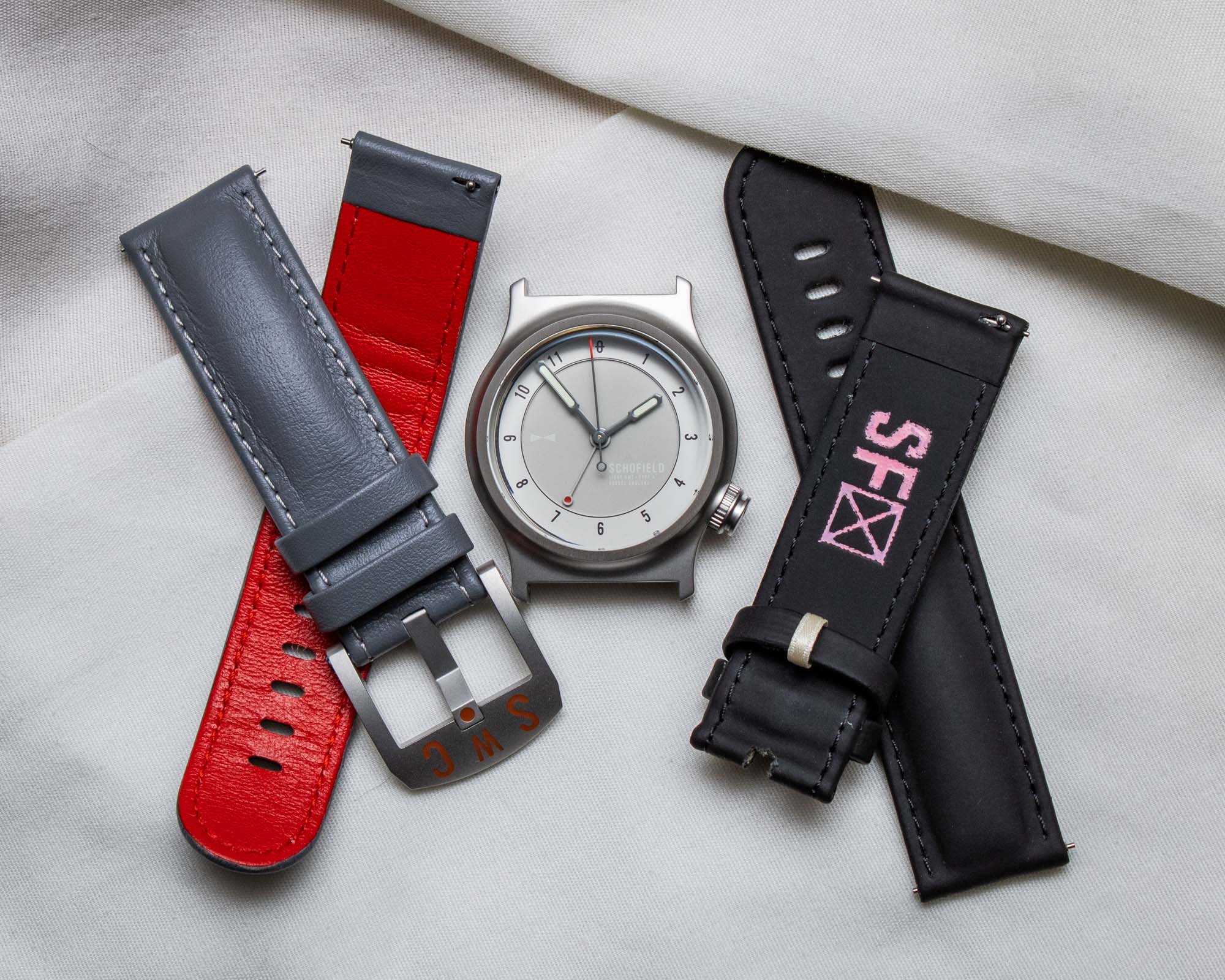
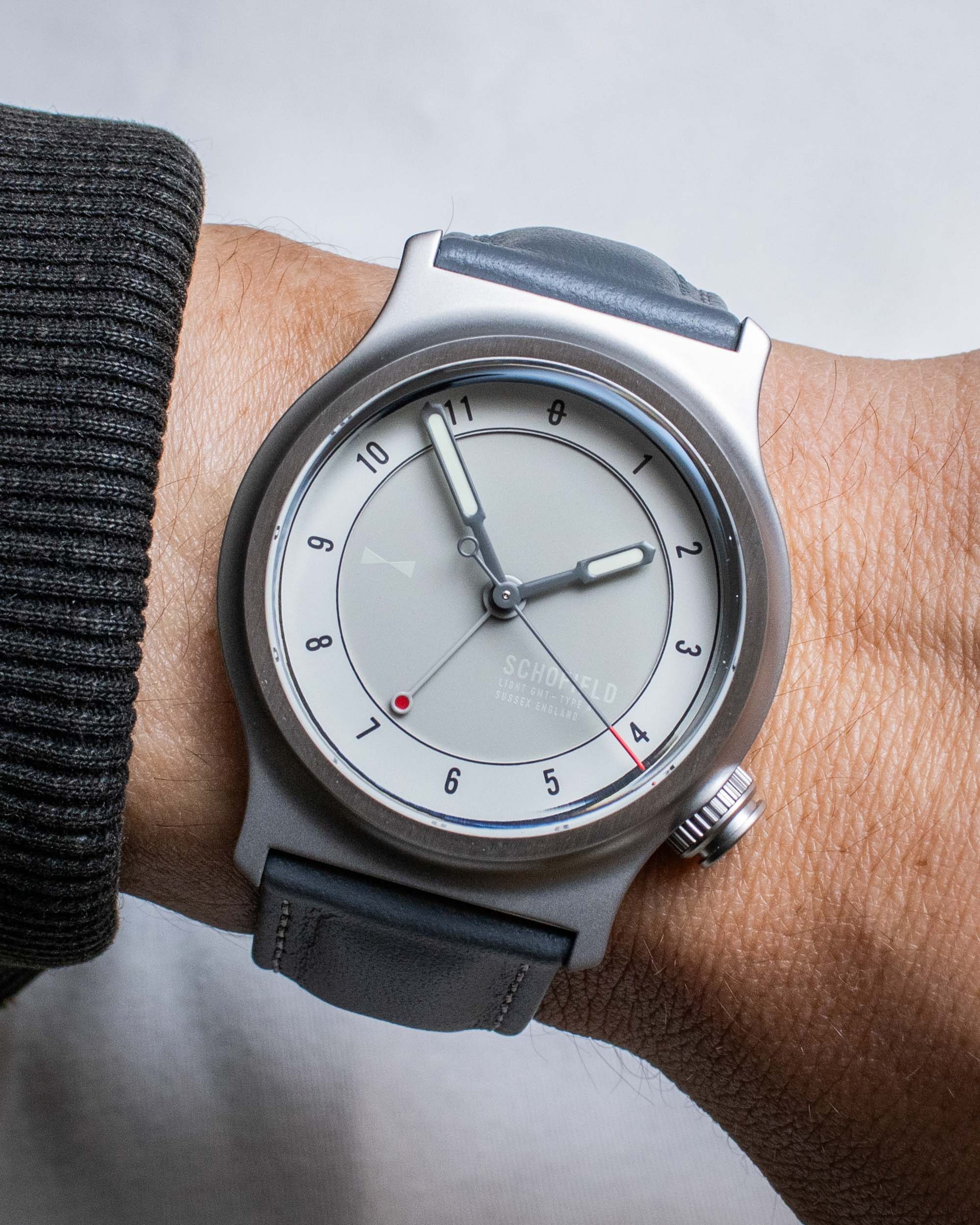
Given the amount of care and attention to detail that goes into Schofield’s products, none of its watches are inexpensive items, and while the Light was specifically created to be its most affordable model, it is hardly what most people would consider to be an entry-level offering. For those of us outside the UK who do not have to pay VAT, the Schofield Light has an official retail price of £1,825 GBP, which works out to approximately $2,300 USD (at the time of writing). While this is hardly the least expensive way to get your hands on a watch with this movement, the Light does achieve its goal of being Schofield’s most affordable model, and you can’t really compare this duo of 150-piece limited editions to mass-produced offerings like the Seiko 5 GMT. Additionally, despite my minor nitpicks about certain elements of its design, I ultimately find the Schofield Light to be an incredibly charming timepiece, and it is quite encouraging to see the British brand spread its wings and add a new case silhouette to its catalog. For more information on the Schofield Light, please visit the brand’s website.

